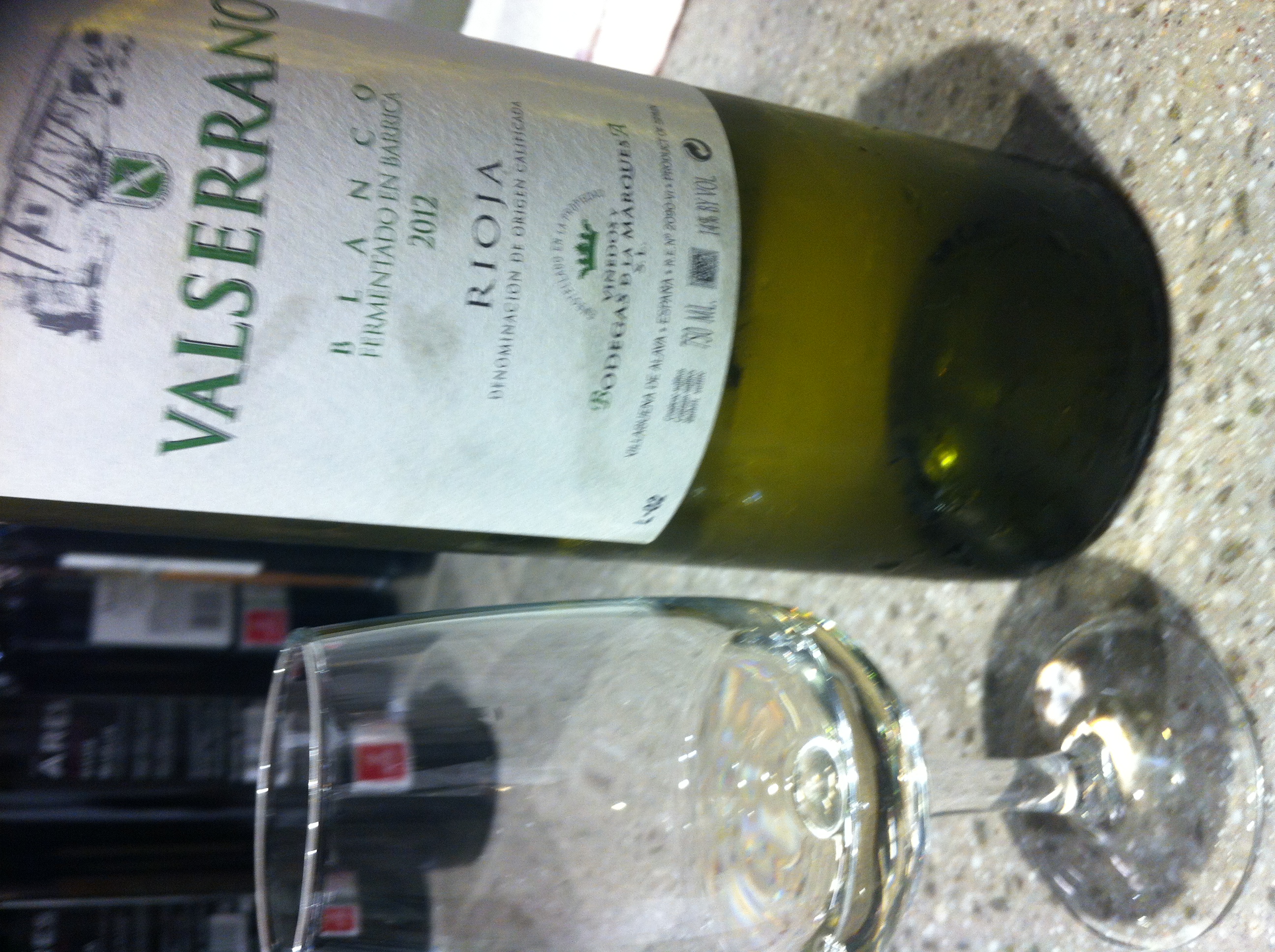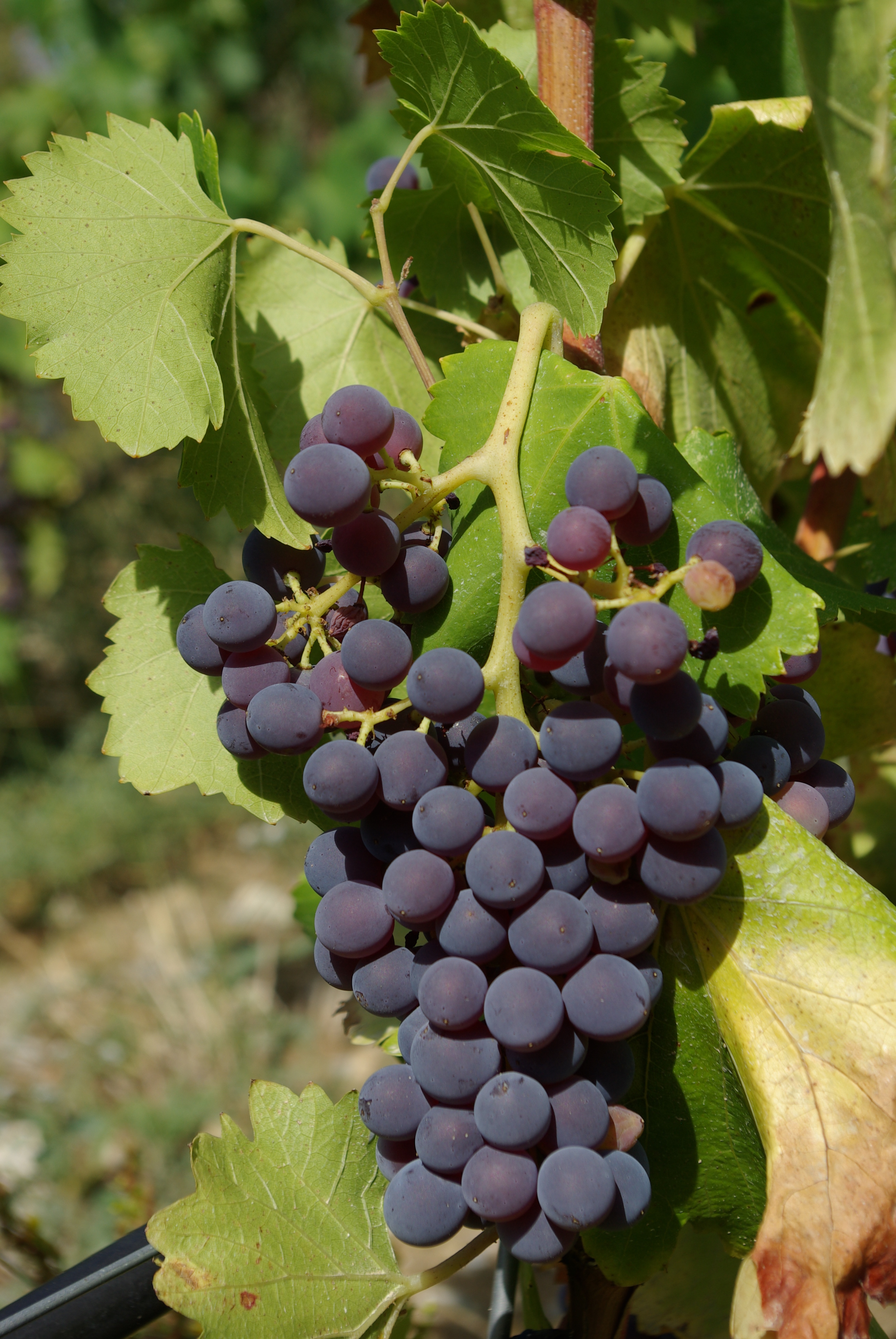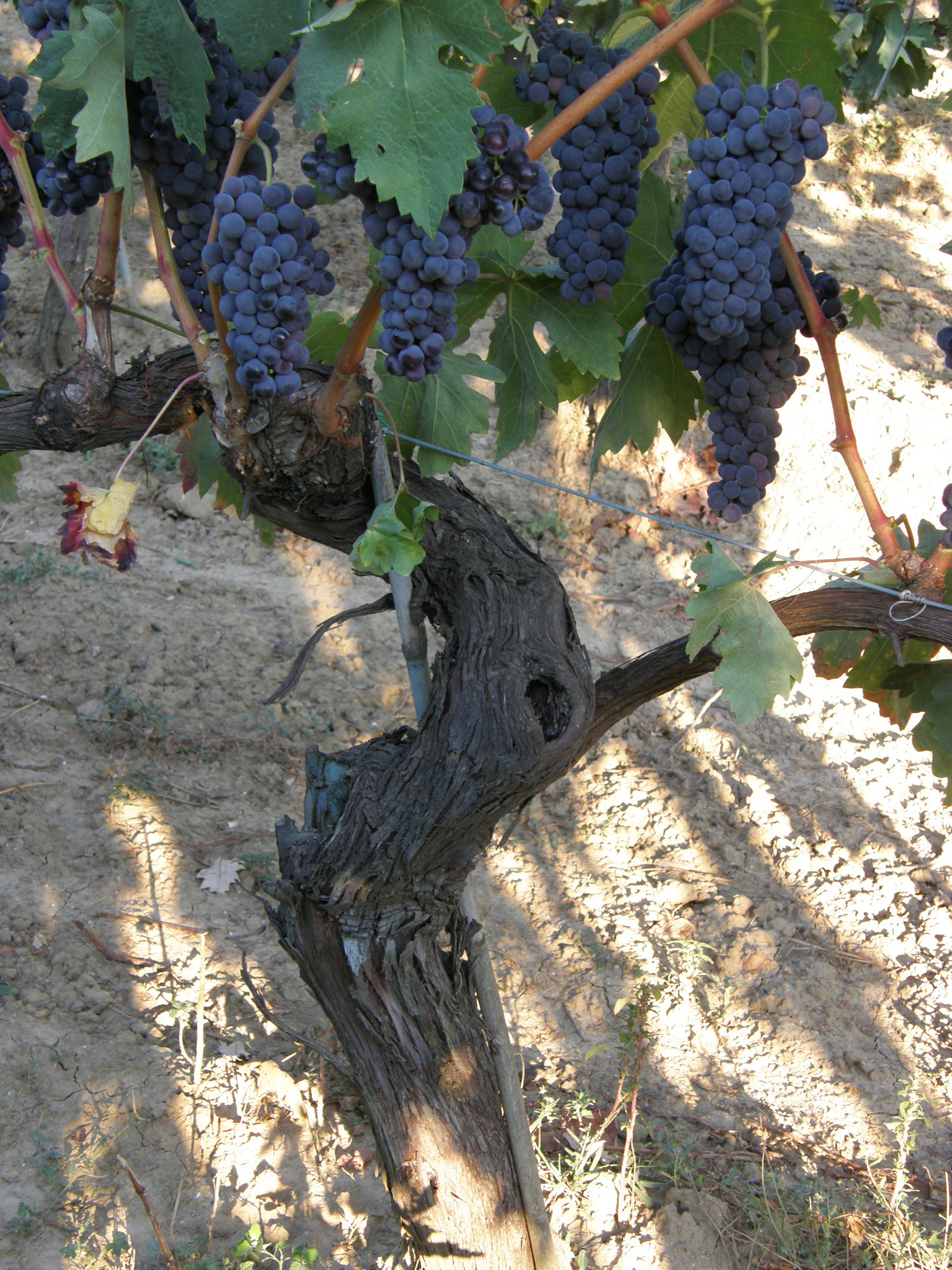|
Uclés (DO)
Uclés is a Spanish Denominación de Origen Protegida (DOP) for wines located in the region of Castile-La Mancha, (Spain), around the town of Uclés in the west of the province of Cuenca and in the northeast of the province of Toledo. History In 2002 a number of local wine producers (''bodegueros'') formed a quality wine association. The area acquired its DO status in 2006. Climate This DOP has a continental climate, i.e. long, hot dry summers and cold winters. Average annual rainfall is around 500 mm. Soils The vineyards in Uclés DOP are located in three different geological areas: * Sierra de Altomira. Abrupt landscape and presence of dolomitic limestone * Western zone. Rolling landscape, comprising sediments, floodplain and valley floors * Eastern zone. Intermediate depression, comprising ternary deposits The soils are very varied, though they are mostly sandy, deep and generally not very fertile. Drainage is good and oxygen is available for the root systems of t ... [...More Info...] [...Related Items...] OR: [Wikipedia] [Google] [Baidu] |
Province Of Cuenca
Cuenca is one of the five provinces of the autonomous community of Castilla-La Mancha. It is located in the eastern part of this autonomous community and covers 17,141 square km. It has a population of 203,841 inhabitants -- the least populated of the five provinces. Its capital city is also called Cuenca. Geography The province is bordered by the provinces of Valencia (including its exclave Rincón de Ademuz), Albacete, Ciudad Real, Toledo, Madrid, Guadalajara, and Teruel. The northeastern side of the province is in the mountainous Sistema Ibérico area. 211,375 people (2007) live in the province. Its capital is Cuenca, where nearly a quarter of the population live, some 52,980 people. There are 238 municipalities in Cuenca. Other populous towns and municipalities include Tarancón, San Clemente, Quintanar del Rey, Huete, Villanueva de la Jara, Motilla del Palancar, Mota del Cuervo, La Almarcha and Las Pedroñeras. History In 1851 Cuenca lost Requena-Utiel to the neig ... [...More Info...] [...Related Items...] OR: [Wikipedia] [Google] [Baidu] |
Cabernet Sauvignon
Cabernet Sauvignon () is one of the world's most widely recognized red wine grape varieties. It is grown in nearly every major wine producing country among a diverse spectrum of climates from Australia and British Columbia, Canada to Lebanon's Beqaa Valley. Cabernet Sauvignon became internationally recognized through its prominence in Bordeaux wines, where it is often blended with Merlot and Cabernet Franc. From France and Spain, the grape spread across Europe and to the New World where it found new homes in places like California's Santa Cruz Mountains, Paso Robles, Napa Valley, New Zealand's Hawke's Bay, South Africa's Stellenbosch region, Australia's Margaret River, McLaren Vale and Coonawarra regions, and Chile's Maipo Valley and Colchagua. For most of the 20th century, it was the world's most widely planted premium red wine grape until it was surpassed by Merlot in the 1990s. However, by 2015, Cabernet Sauvignon had once again become the most widely planted wine gra ... [...More Info...] [...Related Items...] OR: [Wikipedia] [Google] [Baidu] |
Macabeo
Macabeo, also called Viura or Macabeu (, ), is a white variety of wine grape. It is widely grown in the Rioja region of northeastern Spain, the Cava producing areas south of Barcelona, and the Languedoc-Roussillon region of France. Spanish plantations stood at nearly in 2015, making it the second most grown white grape variety in Spain. In France, plantations accounted for in 2007. Since 2009, some Macabeo is grown in Israel. Styles and winemaking  The grape is mostly used to make mildly acidic and young white wines mostly suitable for early co ...
The grape is mostly used to make mildly acidic and young white wines mostly suitable for early co ...
[...More Info...] [...Related Items...] OR: [Wikipedia] [Google] [Baidu] |
Sauvignon Blanc
is a green-skinned grape variety that originates from the Bordeaux region of France. The grape most likely gets its name from the French words ''sauvage'' ("wild") and ''blanc'' ("white") due to its early origins as an indigenous grape in South West France. It is possibly a descendant of Savagnin. is planted in many of the world's wine regions, producing a crisp, dry, and refreshing white varietal wine. The grape is also a component of the famous dessert wines from Sauternes and Barsac. Sauvignon blanc is widely cultivated in France, Chile, Romania, Canada, Australia, New Zealand, South Africa, Bulgaria, the states of Oregon, Washington, and California in the US. Some New World Sauvignon blancs, particularly from California, may also be called "Fumé Blanc", a marketing term coined by Robert Mondavi in reference to Pouilly-Fumé. Depending on the climate, the flavor can range from aggressively grassy to sweetly tropical. In cooler climates, the grape has a tendency to pr ... [...More Info...] [...Related Items...] OR: [Wikipedia] [Google] [Baidu] |
Muscat Blanc à Petits Grains
Muscat ( ar, مَسْقَط, ) is the capital and most populated city in Oman. It is the seat of the Governorate of Muscat. According to the National Centre for Statistics and Information (NCSI), the total population of Muscat Governorate was 1.4 million as of September 2018. The metropolitan area spans approximately and includes six provinces called . Known since the early 1st century AD as an important trading port between the west and the east, Muscat was ruled by various indigenous tribes as well as foreign powers such as the Persians, the Portuguese Empire and the Ottoman Empire at various points in its history. A regional military power in the 18th century, Muscat's influence extended as far as East Africa and Zanzibar. As an important port-town in the Gulf of Oman, Muscat attracted foreign tradesmen and settlers such as the Persians, Balochis and Sindhis. Since the ascension of Qaboos bin Said as Sultan of Oman in 1970, Muscat has experienced rapid infrastructural deve ... [...More Info...] [...Related Items...] OR: [Wikipedia] [Google] [Baidu] |
Chardonnay
Chardonnay (, , ) is a green-skinned grape variety used in the production of white wine. The variety originated in the Burgundy wine region of eastern French wine, France, but is now grown wherever wine is produced, from English wine, England to New Zealand wine, New Zealand. For new and developing wine regions, growing Chardonnay is seen as a 'rite of passage' and an easy entry into the international wine market. The Chardonnay grape itself is neutral, with many of the flavors commonly associated with the wine being derived from such influences as ''terroir'' and oak (wine), oak.Robinson, 2006, pp. 154–56. It is vinified in many different styles, from the lean, crisply mineral wines of Chablis, France, to New World wines with oak and tropical fruit flavors. In cool climates (such as Chablis and the Carneros AVA of California (wine), California), Chardonnay wine tends to be medium to light body with noticeable acidity (wine), acidity and flavors of green plum, apple, and pe ... [...More Info...] [...Related Items...] OR: [Wikipedia] [Google] [Baidu] |
Verdejo
Verdejo is a variety of wine grape that has long been grown in the Rueda region of Spain. The grape originated in North Africa, and was spread to Rueda in about the 11th Century, possibly by Mozarabs. Verdejo was generally used to make a strongly oxidized, Sherry-like wine. In the Mid-20th Century, Verdejo almost became extinct, had it not been for the local winegrower Ángel Rodríguez Vidal (Bodega Martinsancho), who opted for this variety and contributed to re-establishing its prominence in the region. In the 1970s, the winemaking company Marqués de Riscal began to develop a fresher style of white wine based on Verdejo with the help of French oenologist Émile Peynaud.Asimov, Eric (2008)"Wines of the Times: Emerging, in Spain, to Warm Applause" ''The New York Times'', March 5, 2008. Online version retrieved 2008-03-07. In 1980, white wines from the Rueda region were recognized by a Denominación de Origen (DO). Wines labeled ''Rueda'' must contain 50% Verdejo; the remaind ... [...More Info...] [...Related Items...] OR: [Wikipedia] [Google] [Baidu] |
Grenache
Grenache () or Garnacha () is one of the most widely planted red wine grape varieties in the world. Niels Lillelund: ''Rhône-Vinene'' p. 25, JP Bøger – JP/Politikens Forlagshus A/S, 2004. . It ripens late, so it needs hot, dry conditions such as those found in Spain, where the grape most likely originated. It is also grown in the Italian island of Sardinia, the south of France, Australia, and California's Monterey AVA and San Joaquin Valley. It is generally spicy, berry-flavored and soft on the palate and produces wine with a relatively high alcohol content, but it needs careful control of yields for best results. Characteristic flavor profiles on Grenache include red fruit flavors (raspberry and strawberry) with a subtle, white pepper spice note. Grenache wines are highly prone to oxidation, with even young examples having the potential to show browning (or "bricking") coloration that can be noticed around the rim when evaluating the wine at an angle in the glass. As ... [...More Info...] [...Related Items...] OR: [Wikipedia] [Google] [Baidu] |
Syrah
Syrah (), also known as Shiraz, is a dark-skinned grape variety grown throughout the world and used primarily to produce red wine. In 1999, Syrah was found to be the offspring of two obscure grapes from southeastern France, Dureza and Mondeuse Blanche. Syrah should not be confused with Petite Sirah, a cross of Syrah with Peloursin dating from 1880. The style and flavor profile of wines made from Syrah are influenced by the climate where the grapes are grown. In moderate climates (such as the northern Rhone Valley and parts of the Walla Walla AVA in Washington State), they tend to produce medium to full-bodied wines with medium-plus to high levels of tannins and notes of blackberry, mint and black pepper. In hot climates (such as Crete, and the Barossa Valley and McLaren Vale regions of Australia), Syrah is more consistently full-bodied with softer tannin, jammier fruit and spice notes of licorice, anise and earthy leather. In many regions the acidity and tannin levels of Syra ... [...More Info...] [...Related Items...] OR: [Wikipedia] [Google] [Baidu] |
Merlot
Merlot is a dark blue–colored wine grape variety, that is used as both a blending grape and for varietal wines. The name ''Merlot'' is thought to be a diminutive of ''merle'', the French name for the blackbird, probably a reference to the color of the grape. Its softness and "fleshiness," combined with its earlier ripening, make Merlot a popular grape for blending with the sterner, later-ripening Cabernet Sauvignon, which tends to be higher in tannin. Along with Cabernet Sauvignon, Cabernet Franc, Malbec and Petit Verdot, Merlot is one of the primary grapes used in Bordeaux wine, and it is the most widely planted grape in the Bordeaux wine regions. Merlot is also one of the most popular red wine varietals in many markets. This flexibility has helped to make it one of the world's most planted grape varieties. As of 2004, Merlot was estimated to be the third most grown variety at globally.J. Robinson (ed) ''The Oxford Companion to Wine'' Third Edition, Oxford University Pre ... [...More Info...] [...Related Items...] OR: [Wikipedia] [Google] [Baidu] |
Cencibel
Tempranillo (also known as Ull de Llebre, Cencibel, Tinto Fino and Tinta del Pais in Spain, Aragonez or Tinta Roriz in Portugal, and several other synonyms elsewhere) is a black grape variety widely grown to make full-bodied red wines in its native Spain. Its name is the diminutive of the Spanish ''temprano'' ("early"), a reference to the fact that it ripens several weeks earlier than most Spanish red grapes. Tempranillo has been grown on the Iberian Peninsula since the time of Phoenician settlements. It is the main grape used in Rioja, and is often referred to as Spain's noble grape. The grape has been planted throughout the globe's wine regions. In 2015, Tempranillo was the fourth most widely planted wine grape variety worldwide with under vine, of which 87% was in Spain where it is the most planted red grape variety. Unlike more aromatic red wine varieties like Cabernet Sauvignon, Sangiovese and Pinot noir, Tempranillo has a relatively neutral profile so it is often ... [...More Info...] [...Related Items...] OR: [Wikipedia] [Google] [Baidu] |
Province Of Toledo
Toledo is a province of central Spain, in the western part of the autonomous community of Castile–La Mancha. It is bordered by the provinces of Madrid, Cuenca, Ciudad Real, Badajoz, Cáceres, and Ávila. Its capital is the city of Toledo. Demography Of the province's 711,228 people (2012), only about 1/9 live in the capital, Toledo, which is also the capital of the autonomous community. The most populated municipalities in the province are Toledo and Talavera de la Reina with 83,741 and 83,303 inhabitants each (INE, 2017). The province contains 204 municipalities. The smallest municipality in Spain, Illán de Vacas, with a population of 8, is in Toledo province. See List of municipalities in Toledo. Population development The historical population is given in the following chart: Colors= id:lightgrey value:gray(0.9) id:darkgrey value:gray(0.7) id:sfondo value:rgb(1,1,1) ImageSize = width:600 height:auto barincrement:30 PlotArea = left:40 bottom:40 top:20 right:2 ... [...More Info...] [...Related Items...] OR: [Wikipedia] [Google] [Baidu] |
.jpg)







.jpg)